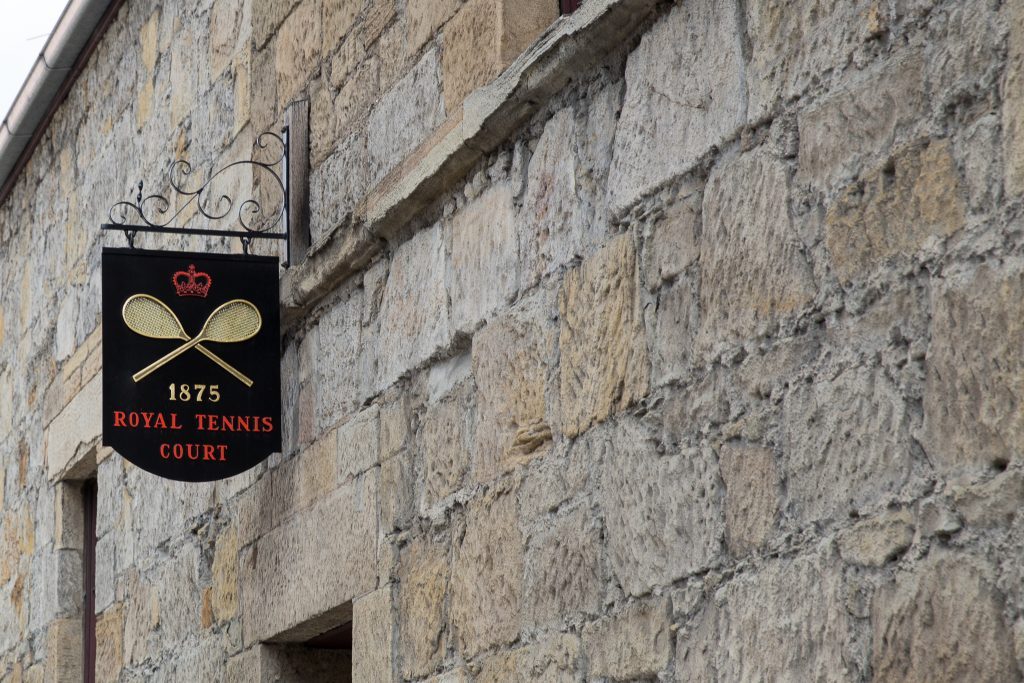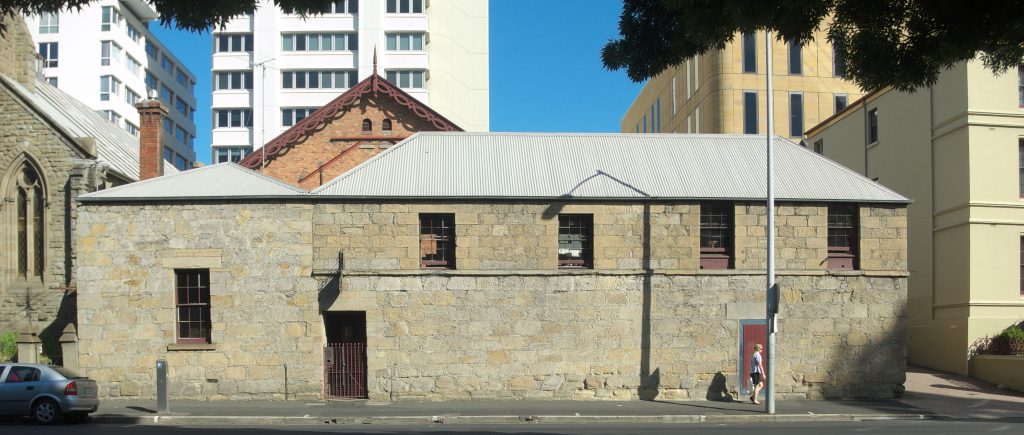Through the warm summer months, Hobartians find themselves keen to spend as much time outdoors as possible. The cry goes up: get as much sun as you can! We are aided and abetted in this project by obligingly long daylight hours, a very long dusk and a cool breeze to soothe us most evenings. All of this leads to a large amount of time spent either participating in, or watching, sport.
A key spectator sport in Hobart each January is the Hobart International, a professional women’s tennis tournament held here since 1994. You will be pleased to know that tennis has been alive and well in Hobart for much longer than 25 years. There has been a tennis court in Hobart since 1875, and it’s been in continuous use for the past 144 years. This is the mother of tennis, real tennis, more commonly called Royal Tennis. Located at 45 Davey Street, across the road from St David’s Park, it is the original racquet game. The ball is played across a net like modern tennis, with the same scoring system. The difference here is that it is an indoor court where players can use the back and side walls as in squash. It was the favourite past-time of King Henry VIII and the Real Tennis world championship is the oldest of any sport.

When Samuel Travers founded the Hobart Royal Tennis club in 1875, it was the only tennis court in the southern hemisphere. The modern game of lawn tennis didn’t exist at that time. The Royal Tennis club room facing Davey Street dates from before 1850 and it was originally built as a distillery. The court behind it was constructed in 1874. For the first 93 years, the club only allowed male players and changed that rule in 1968. The Hobart Royal Tennis Club has produced the world’s most successful real tennis player: Robert Fahey. He won the world championship in 1994 and has held the title ever since, continuing to win many international tournaments. When it first started in Hobart, the sport was known as tennis, then Royal Tennis, and since 2001 it has been called the Hobart Real Tennis Club.
The game was devised in France. The court and racquet designs can be traced back to the early 1500s. Both are identical to those used today. At its peak there were over 1,800 courts in Paris but by the early 1600s the game had nearly died out in France. It maintained its popularity in England, thanks to King Henry VIII’s enthusiasm for the game (Henry VIII 1491 – 1547, reign 1509 – 1547). The first tennis court in England was built at Hampton Court Palace in 1526, which makes it one of the oldest sporting venues in the world. This is where the whole royal court would gather to watch the game, sitting in the galleries behind heavy netting, gambling, winning – and losing – fortunes with each game. Visiting dignitaries and royalty from other countries vied to get on the court with Henry. It was always best to bet on the King to win, as few competitors would have been keen to risk their favour with the young monarch by beating him in such a public way.
When the game arrived in Hobart it retained its exclusive appeal as it was an expensive sport which attracted the elite of Hobart’s society. Membership had to cover the cost of the building, complete with dressing room, bath room and lounge. There was also the cost of the salary of the Marker, whose job it was to know all the rules of the game and ensure the court was fit for play, retrieve the balls, keep score and manage the crowds in the gallery. Then there were the costs of balls, racquets, net repairs and refreshments for players and spectators.

Little has changed in the buildings since the 1870s, just the addition of a trophy room in 1987 and a new entrance foyer in 1990 which opens onto the car park. Other clubs and courts can be found around Australia: in Victoria at Ballarat, Romsey and Melbourne; in NSW at Sydney and Perth in WA

Be sure to watch a game here at Hobart at the oldest court in Australia. Right now is a great time to visit with the World Doubles Championship being held at the courts here in Hobart January 2nd – 6th. You can also watch it live on YouTube. Visitors are always welcome to view the court and clubhouse, and a small donation will be very welcome. The club is very active and in use day and night, 7 days a week.


